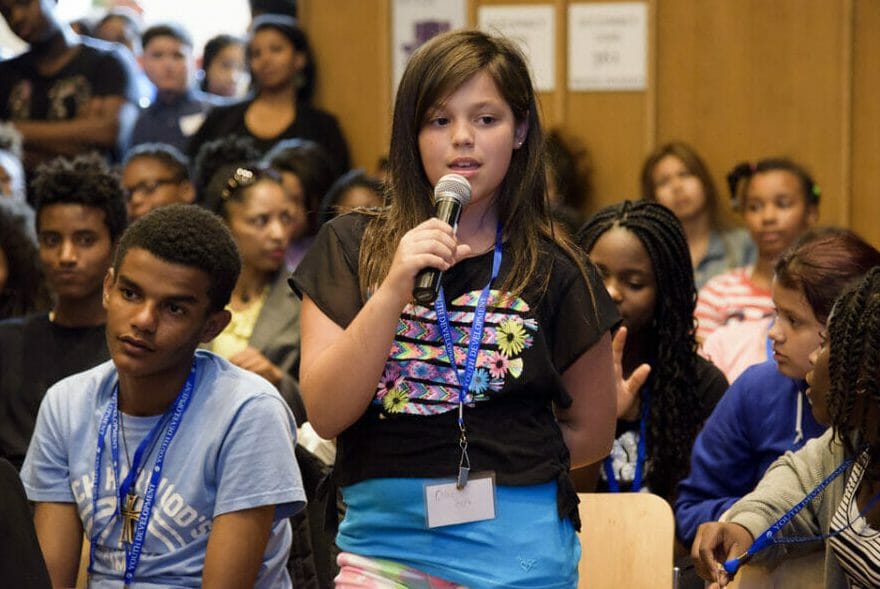Q: My daughter can’t learn the colors. Is she color blind and what do I do if she is?
There is a big difference between challenges in learning the colors and being color blind. Most people believe someone who is color blind can only see in black and white, but monochromatic vision is extremely rare and is mostly caused by some disease or trauma. 99% of the time, color blindness is the inability to distinguish shades of green-and-red or blue-and-yellow.
Research has found that color blindness is mostly an inherited (genetic) disability and people are born with it. 5% to 8% of men and only 0.5% of women are born color blind.
Some research has found that color blindness can be caused by nerve damage or exposure to chemicals, which means there is a chance of becoming color blind after birth.
For more information, visit this article.

Color blindness can only mildly affect the learning process, especially when the learning depends on color coding. For color blind kids, it will be a challenge to pick the right color sock or interpret a traffic light by the color only (this is why most traffic lights show the red person standing and the green person walking).
When instructions are given with colors, as in “Draw a line to the red ball” or “Color the flags green”, color blind kids may not perform well. Say you give your child a sheet of paper with big A’s, B’s and C’s drawn on it and you ask him or her to color every A in red, every B in yellow and every C in blue. Your child may be incorrect in one of 3 cases:
- Your child does not recognize the letters A, B and/or C
- Your child does not recognize the colors red, yellow and/or blue
- Your child is color blind and gets the colors mixed up
What parents can do
- If you suspect your kid suffers from color blindness, ask them to use a pencil or a black marker. This will focus the activity solely on the recognition of the letters. If the answers are now correct, there is some color-related problem.
- Use the tips in my post How to Teach Kids Colors to teach your child the colors. A child with healthy vision will gradually pick up the colors until they are all mastered. If your child is color blind, they will consistently confuse certain colors, no matter what you do.
- Explain to your kid what is happening and say that you understand that some colors look the same to him or her.
- Make sure all people working with your child know he or she cannot tell the difference between some colors, but do not make a big deal out of it.
- Write the name of the color with a sticker on crayons, markers and colored pencils to help your kid distinguish between them when drawing a colored line, coloring in or marking maps.
- Ask your kid’s teachers to use a black board and white chalk if possible. Colorful chalk on a green board may be difficult for your child.
- Ask your kid’s teachers to prepare handouts in black text on white paper.
- Ask the teachers to avoid using color coding in exercises, test sheets and marking.
- Some standard tests are color coded, so ask your child’s teacher to help your child with it.
 Generally, color blindness should not affect kids’ learning. My son is 13 years old now and he cannot tell the difference between blue and purple. We discovered this when he was 2½ years old, because he knew all the other colors. For 13 years, his color blindness did not interfere with his learning at all. In fact, he is so brilliant I do not think any of his teachers know he is color blind.
Generally, color blindness should not affect kids’ learning. My son is 13 years old now and he cannot tell the difference between blue and purple. We discovered this when he was 2½ years old, because he knew all the other colors. For 13 years, his color blindness did not interfere with his learning at all. In fact, he is so brilliant I do not think any of his teachers know he is color blind.
My dad is also color blind (now you know where my son got it) and worked at one stage in his life an electrician. God knows how he managed so distinguish between the colors of the wires (he says that when he sees different colors together, it is easier to tell them apart). He is also a crafty person and has done huge needle work tapestries and silk scarves for years.
The main reason to find out if your kids are color blind is to reassure them they are OK and to strengthen their self esteem.
Colorful parenting,
Ronit











